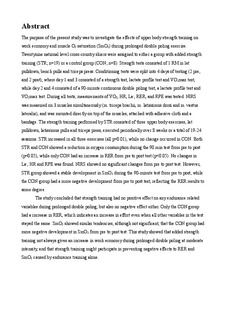| dc.description.abstract | The purpose of the present study was to investigate the effects of upper body strength training on work economy and muscle O2 saturation (SmO2) during prolonged double poling exercise. Twentynine national level cross-country skiers were assigned to either a group with added strength training (STR; n=19) or a control group (CON; n=8). Strength tests consisted of 1 RM in lat pulldown, bench pulls and triceps press. Conditioning tests were split into 4 days of testing (2 pre, and 2 post), where day 1 and 3 consisted of a strength test, lactate profile test and VO2max test, while day 2 and 4 consisted of a 90-minute continuous double poling test, a lactate profile test and VO2max test. During all tests, measurements of VO2, HR, La-, RER, and RPE was tested. NIRS was measured on 3 muscles simultaneously (m. triceps brachii, m. latissimus dorsi and m. vastus
lateralis), and was mounted directly on top of the muscles, attached with adhesive cloth and a bandage. The strength training performed by STR consisted of three upper body exercises, lat pulldown, latissimus pulls and triceps press, executed periodically over 8 weeks or a total of 19-24 sessions. STR increased in all three exercises (all p<0.01), while no change occurred in CON. Both STR and CON showed a reduction in oxygen consumption during the 90 min test from pre to post (p<0.05), while only CON had an increase in RER from pre to post test (p<0.05). No changes in La-, HR and RPE was found. NIRS showed no significant changes from pre to post test. However,
STR group showed a stable development in SmO2 during the 90-minute test from pre to post, while the CON group had a more negative development from pre to post test, reflecting the RER results to some degree.
The study concluded that strength training had no positive effect on any endurance related
variables during prolonged double poling, but also no negative effect either. Only the CON group had a increase in RER, which indicates an increase in effort even when all other variables in the test stayed the same. SmO2 showed similar tendencies, although not significant, that the CON group had more negative development in SmO2 from pre to post test. This study showed that added strength training not always gives an increase in work economy during prolonged double poling at moderate intensity, and that strength training might participate in preventing negative effects to RER and SmO2 caused by endurance training alone. | nb_NO |
